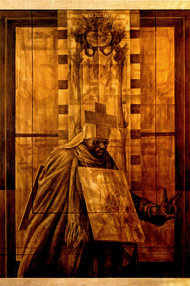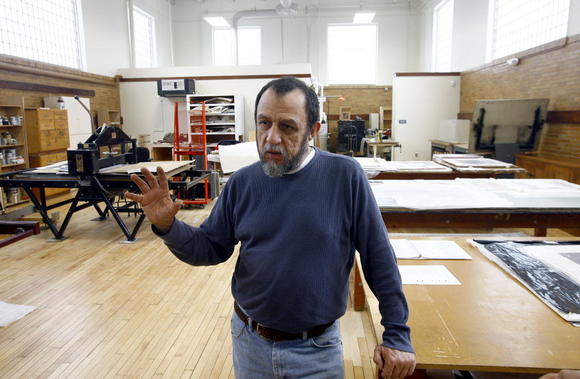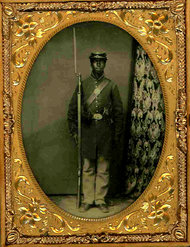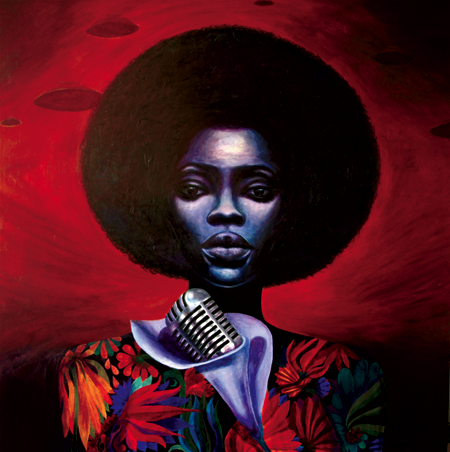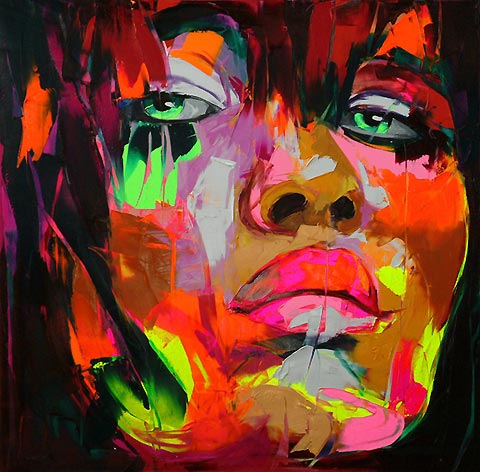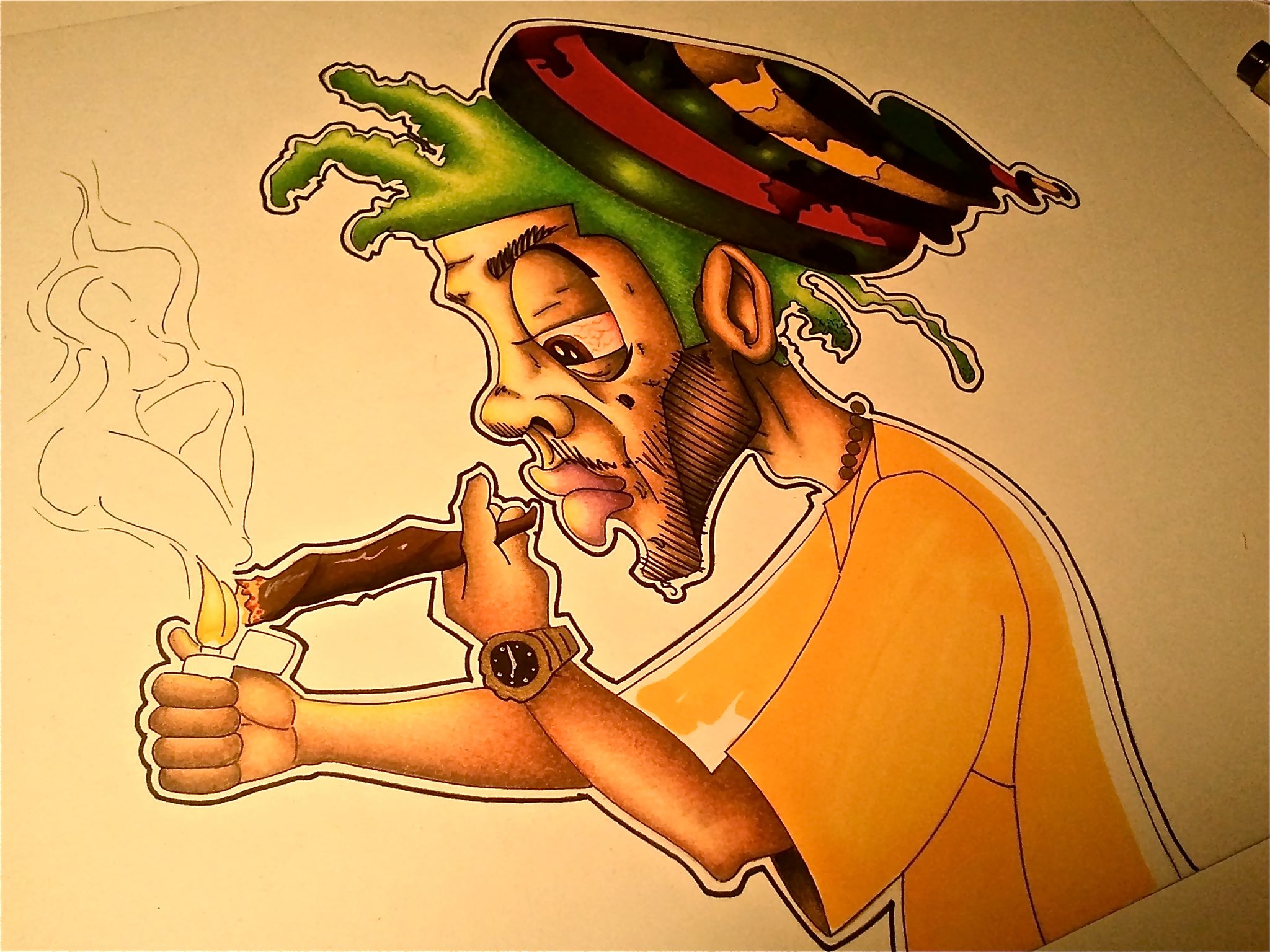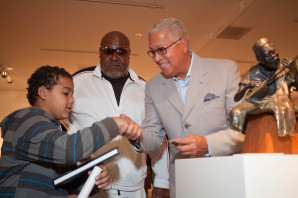By CAROL VOGEL
The Museum of Modern Art has recently acquired a disparate group of artworks, adding muscle to its already world-class permanent collection. Some were gifts promised years ago and only now finalized; others are newer additions that suggest the areas that curators feel need to be strengthened.
Of all the donors the hedge fund billionaire Steven A. Cohen is by far the most high profile. Although he is currently in the hot seat as the government’s insider trading investigation intensifies, Mr. Cohen has made good on his promises to MoMA and is even continuing to give it artworks.
Among the completed gifts from him and his wife, Alexandra, is an untitled painting by the German artist Martin Kippenberger from his series “Dear Painter, Paint for Me.” It is a photograph of Kippenberger seated on a discarded sofa on a New York City sidewalk. Another is “Rancho,” a 1968 canvas by Ed Ruscha — one of his so-called “liquid letters” paintings, or canvases with letters rendered in a trompe-l’oeil manner so they appear to be dripping down the canvas or are still wet. A third Cohen gift is an untitled Cy Twombly sculpture from 1955.
More recently the Cohens gave MoMA “House of Flowers (see you there),” a painting by the British artist Peter Doig from 2007-9. It’s a colorful canvas depicting a lone, shirtless man.
“We have a personal connection to these artists and are thrilled that museum visitors will view these pieces in their appropriate contexts as part of MoMA’s permanent collection,” Mr. Cohen wrote in an e-mail.
A group of works by Lynda Benglis from the collector Glenn Fuhrman through his family foundation and Agnes Gund, president emerita of MoMA, broadens the museum’s collection of work by female artists from the 1970s. “Lagniappe II Glitter,” a 1979 sculptural wall relief of cast paper, pigment, paint and glitter, is among the most interesting. Curators have also been aiming to close a far bigger gap in the museum’s holdings by adding work by African-American artists from the 1960s, ’70s and ’80s. It’s not just MoMA that has been focusing on this area. Recently the Brooklyn Museum acquired a collection of work by many of these artists.
“The story we tell about the history of art since 1945 is changing, and the voices of these artists are crucial to our more expansive, more nuanced and much more interesting take on this period,” said Ann Temkin, MoMA’s chief curator in the department of painting and sculpture, explaining the addition of 12 works by six African-American artists. All of them are currently represented in “Now Dig This! Art and Black Los Angeles 1960-1980,” an exhibition on view at MoMA PS1 in Queens that was organized by the Hammer Museum in Los Angeles.
Two sculptures by David Hammons, including “Untitled (Night Train)” from 1989, are part of a gift by A C Hudgins, a trustee, and his family, who have also given the museum one of Senga Nenguid’s so-called “pantyhose pieces,” a single pair of darkly colored, stretched and distorted nylon pantyhose tacked to a wall with splayed limbs, from 1976. The museum also received two assemblages by Betye Saar, from Ronald S. Lauder, MoMA’s honorary chairman, and his wife, Jo Carole.
MoMA bought several works too, including John Outterbridge’s “Broken Dance, Ethnic Heritage Series,” from 1978-82, one of his assemblage sculptures, as well as “The Lifted X,” a welded steel sculpture by Melvin Edwards from 1965. And the museum’s drawing committee purchased Charles White’s “Black Pope (Sandwich Board Man,)” a 1973 image of an African-American man draped in robes and wearing a large cross on his head, flashing a peace sign with his left hand.
VEZZOLI’S ‘TRINITY’
The Italian artist Francesco Vezzoli has made a career out of masterminding spectacles. There was the time at the 2005 Venice Biennale when he created an old-fashioned movie theater with pea-green velvet seats where he showed his raunchy four-minute fantasy trailer for a “remake” of Gore Vidal’s 1979 film “Caligula,” starring Courtney Love, Benicio del Toro, Milla Jovovich and Helen Mirren. Or when he transformed the Gagosian Gallery on 21st Street in Chelsea two years ago into a kind of Gothic church, where he displayed digital copies of old master Madonna and child paintings, each with the faces of supermodels from the late 1970s and ’80s — Christie Brinkley, Cindy Crawford, Naomi Campbell — set in heavy gold frames that drooped at the bottom, Salvador Dali-like.
Now fans and foes can ready for a trilogy of fantastical exhibitions under the umbrella title “The Trinity.” In May there will be “Galleria Vezzoli,” at the Maxxi, the national museum for contemporary art in Rome; in the fall “The Church of Vezzoli,” at MoMA PS 1 and in the fall and winter, “Cinema Vezzoli,” at the Museum of Contemporary Art in Los Angeles.
“They are three separate but related exhibitions examining different aspects of his work,” said Giovanna Melandri, the president of Maxxi, adding that its futuristic building, designed by Zaha Hadid, will be transformed into an overdecorated 1800s-style museum that will display 15 years of Mr. Vezzoli’s work. Perhaps even more ambitious will be a reconstructed Romanesque-style church from Pisticci, a small town in Southern Italy.
The church will be dismantled and transported by boat to PS1, where it will be rebuilt in the courtyard. “It’s nearly 50 by 35 feet,” said Klaus Biesenbach, the director of PS1, who estimates that it will take a month and a half to install. Inside the church will be a program of performances and videos. The Museum of Contemporary Art in Los Angeles will explore Mr. Vezzoli’s passion for European cinema and Hollywood stardom.
“Each museum is doing one-third of the trinity,” Mr. Biesenbach said. “All together it is a single conceptual art project.”
ABSTRACT AVENUE
Thirteen new steel sculptures by Albert Paley will adorn Park Avenue between 53rd and 67th Streets from June 29 through Nov. 8, according to the New York City Parks and Recreation Department. Mr. Paley, who lives in Rochester, has created a series of abstract works that will rise as high as 21 feet. The exhibition is part of a program that began in 2000 and has featured artists like Tom Otterness, Robert Indiana and Niki de Saint Phalle.

